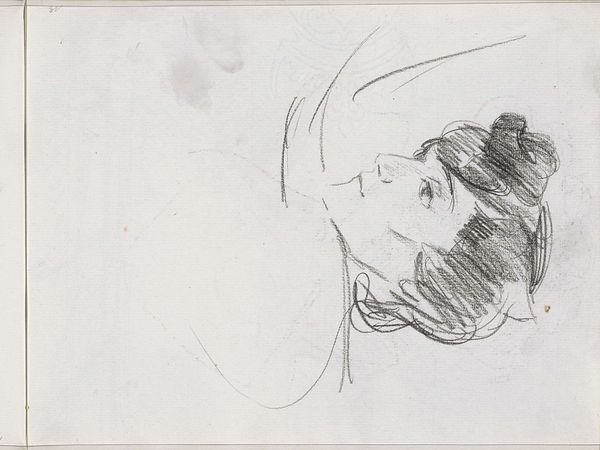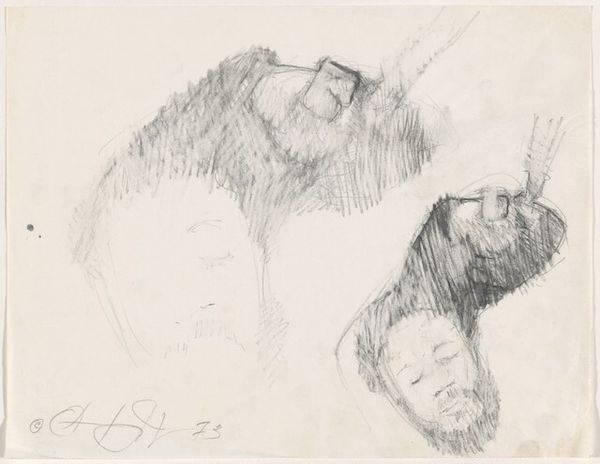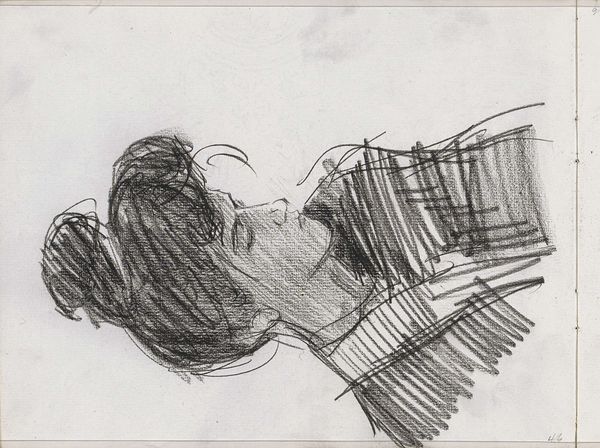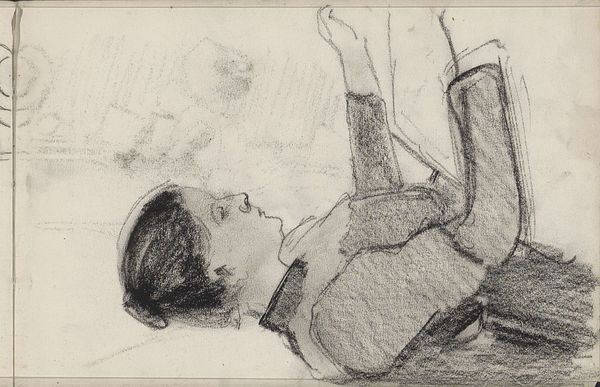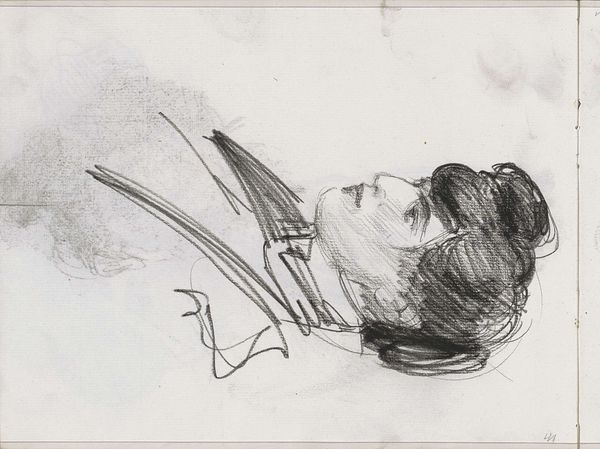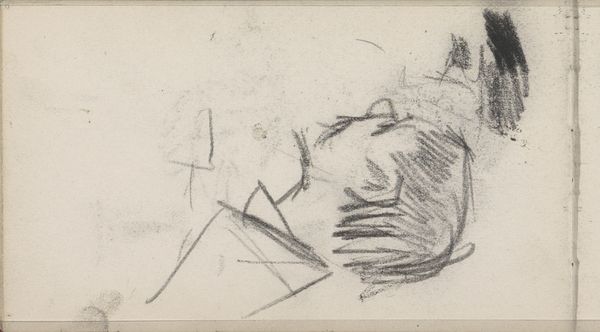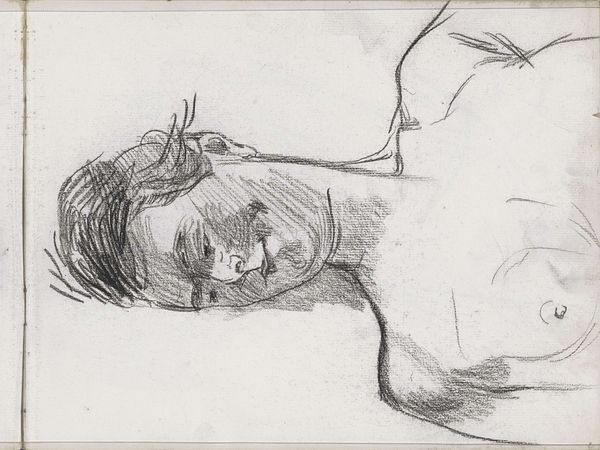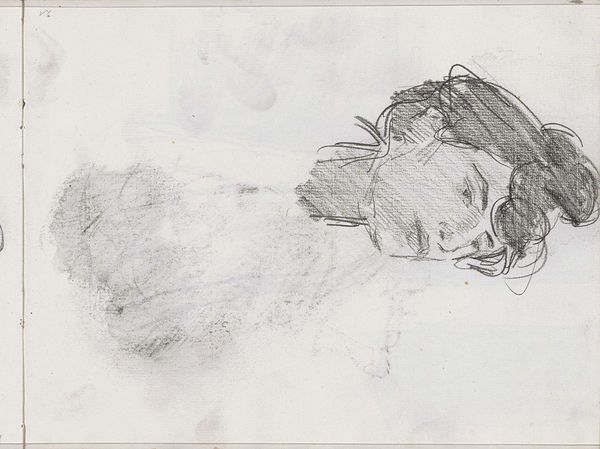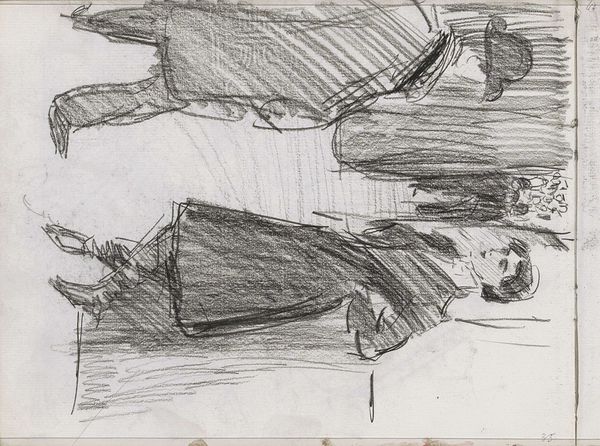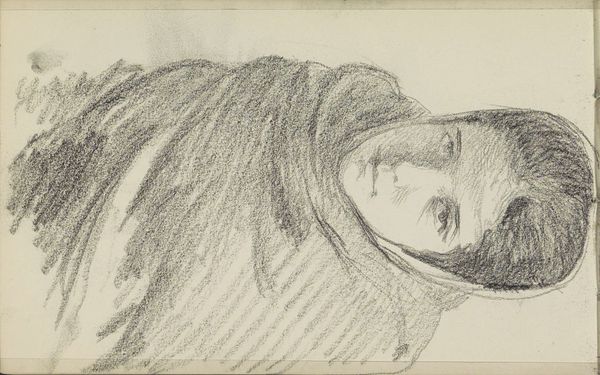
Copyright: Rijks Museum: Open Domain
Editor: This pencil drawing, titled *Standing Young Woman, in Profile,* is by Isaac Israels and thought to be from sometime between 1875 and 1934. I'm struck by the immediacy of it – it feels like a quick sketch capturing a fleeting moment. What can you tell me about its historical context? Curator: Considering the period, we see a departure from highly posed academic portraiture towards capturing modern life. Israels was part of a movement that aimed to portray everyday subjects. What do you notice about the woman's posture and clothing? How do they speak to the era's societal norms or changes? Editor: She seems to be wearing a rather shapeless jacket or coat. Her head is slightly bowed. It doesn’t convey wealth or status. It almost feels… intimate? Curator: Precisely. This reflects the Realist and Impressionist desire to move away from idealised representations and focus on observable reality. How do you think this artistic choice – to depict an ordinary subject in a seemingly unguarded moment – affected the way art was perceived by the public at the time? Did it challenge the status quo? Editor: I imagine it did, especially given the conventions of portraiture that preceded it. By focusing on the everyday, wasn't Israels, in a way, democratizing art? Curator: Absolutely. It challenges the existing power structures within the art world by presenting someone outside the traditional realms of power as worthy of artistic attention. The lack of adornment is also interesting when examining the contemporary fascination and tension concerning women, representation and labour. It pushes viewers to question what constitutes beauty and artistic value, as well as the role of women in society. Editor: So, it’s less about celebrating a specific person, and more about observing a type of person representative of the era? I see now how radical that shift was! Curator: Exactly. We’ve touched on how Israels contributed to reshaping artistic and societal values, shifting away from aristocratic portrayals toward more inclusive representation. It serves as a reminder of how art interacts with and shapes cultural and political dialogues.
Comments
No comments
Be the first to comment and join the conversation on the ultimate creative platform.
